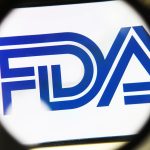
- Biotech Regulation
- FDA Approval
- Health Tech
FDA Approves First Treatment for Ultra-Rare Barth Syndrome
5 minute read

FDA’s ultra-rare disease treatment approval creates new pathway for developing therapies affecting fewer than 1,000 patients
Key Takeaways
- First Barth syndrome treatment approved: FDA grants accelerated approval for Forzinity (elamipretide), treating approximately 150 patients in the U.S. with the ultra-rare genetic disorder
- New regulatory pathway established: Approval demonstrates FDA’s Rare Disease Evidence Principles (RDEP) framework for diseases affecting fewer than 1,000 patients nationally
- Market expansion opportunity: Decision signals potential 12-15% annual growth in rare disease therapeutics market as regulatory barriers decrease for ultra-rare conditions
Introduction
The FDA’s accelerated approval of the first treatment for Barth syndrome marks a regulatory turning point for ultra-rare disease drug development. The agency endorsed Forzinity, developed by privately-held Stealth BioTherapeutics, for treating a genetic disorder that affects approximately 150 individuals nationwide.
This decision represents more than a single drug approval. The regulatory nod demonstrates the FDA’s new approach to evaluating treatments for diseases with extremely small patient populations, potentially reshaping how biotech companies approach ultra-rare condition therapeutics.
Key Developments
Stealth BioTherapeutics endured a turbulent approval process that included an initial rejection in May and significant corporate restructuring. The company laid off 30% of its workforce following the FDA’s complete response letter, which dismissed certain trial data as “exploratory and uninterpretable.”
The FDA accelerated its review timeline, scheduling a final decision for September 26 despite typically requiring six months for complete class 2 responses. This urgency reflected mounting pressure from Congress members, physician coalitions, and patient advocacy groups demanding action on severe unmet medical needs.
According to the official report, the approval was based on data showing improved knee extensor muscle strength, which the FDA determined likely predicted better clinical outcomes such as enhanced standing ability and walking endurance.

Market Impact
The approval validates the FDA’s Rare Disease Evidence Principles pathway, designed for conditions affecting fewer than 1,000 patients. This regulatory framework allows approval based on single well-controlled studies supplemented by confirmatory evidence, reducing development timelines and costs.
Stealth’s volatile stock performance during the approval process led its principal investor to privatize the company. The regulatory uncertainty demonstrates the high-risk, high-reward nature of ultra-rare disease drug development.
The rare disease therapeutics market projects 12-15% compound annual growth over the next five years. Companies including Neurogene, Rocket Pharmaceuticals, Ultragenyx, and UniQure plan to utilize single-arm studies and alternative endpoints for gene therapy approvals.
Strategic Insights
The RDEP pathway fundamentally alters the economics of ultra-rare disease drug development. Traditional regulatory approaches requiring large-scale trials become impractical when total patient populations number in the hundreds rather than thousands.
Biotech companies developing ultra-rare treatments gain access to accelerated timelines while maintaining rigorous safety standards through post-marketing commitments. The FDA requires Stealth to conduct a randomized, double-blind, placebo-controlled trial confirming that muscle strength improvements translate to patient benefits.
This regulatory flexibility attracts more biotech startups and established pharmaceutical companies to invest in previously unviable ultra-rare conditions. The shift creates new competitive dynamics in specialty pharmaceutical markets.
Expert Opinions and Data
Lindsay Marjoram, director of research for the Barth Syndrome Foundation, describes the case as “a litmus test for FDA because it highlights that for ultra-rare diseases, standard regulatory approaches don’t work.”
Stealth CEO Reenie McCarthy called the FDA’s reconsideration “huge” for the company, providing manageable survival timelines during regulatory delays. She noted the initial rejection “blindsided” the company following a positive advisory committee vote.
Dr. Brian Feingold, a pediatric cardiologist, emphasized the drug’s excellent safety profile during advisory meetings, noting no life-threatening side effects despite trial design constraints imposed by the disease’s rarity.
Industry analysts express cautious optimism about FDA flexibility while noting that post-marketing commitments may limit immediate financial upside. Patient advocacy groups welcome the decision as essential support for ultra-rare disease communities.
Conclusion
The Forzinity approval establishes precedent for ultra-rare disease drug development, demonstrating regulatory willingness to accept intermediate endpoints and smaller datasets when addressing severe unmet medical needs. The decision validates innovative approval pathways while maintaining safety oversight through post-marketing requirements.
This regulatory evolution creates immediate opportunities for biotech companies developing treatments for the smallest patient populations, potentially unlocking investment and innovation in previously unviable therapeutic areas.








